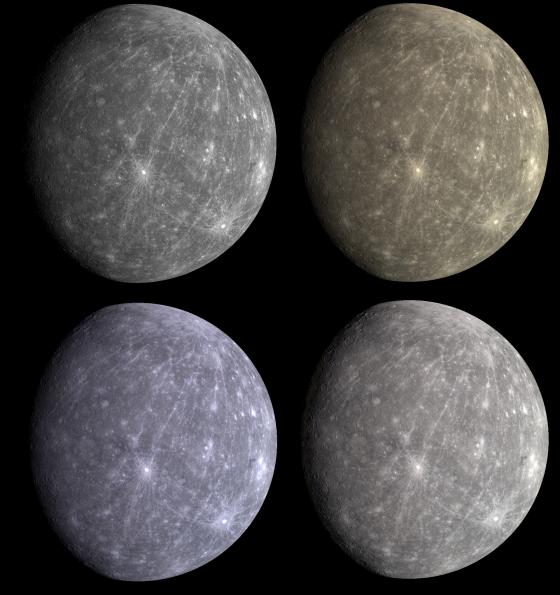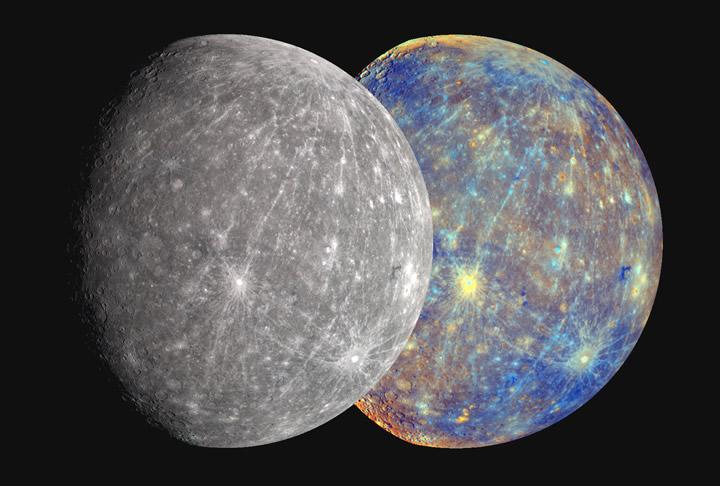t00fri wrote:So let me ask you then, what community you are addressing with the kind of imaging you are doing?
Basically anyone who likes color images of the planets. I'm not targeting scientists nor am I expecting any serious analyses being done on my data. As far as I know, natural color images in this respect are always produced for public affairs purposes and public consumption and not scientific analysis. I'm not aware of true color images, even ones released officially, being used in any serious scientific work. The statement "
approximate natural color" often accompanies such releases for a reason. My work is no different. Serious work requires radiance measurements, filter ratios, etc. and "natural" color images are way too overprocessed for that.
In your last Mercury image you refer however to the preceeding one of yours with this interesting sentence:
Ugordan wrote:Unlike my previous version of the global image that was fudged based on Mercury surface spectra, this one uses calibrated wide-angle camera color data. The old processing should now be rendered obsolete.
Hence, old versus new doesn't look like a pure gamma effect as you claimed above...There is NO concise discussion HOW you did the calibration in the new image. You discussed nowhere how much you could make your Mercury color different without doing anything physically wrong (i.e. the usual estimate of inherent uncertainties in your procedure)?
I should have probably clarified that the two earliest color composites there are not calibrated data, but approximations of officially released false color composites and using the officially published Mercury IR/visible spectra. These are images
http://www.flickr.com/photos/ugordan/2231456684/ and
http://www.flickr.com/photos/ugordan/2232382633/. The latter is clearly marked as [OBSOLETE], I should probably delete it altogether. The source for the images is described in the first of the two. I guess I left them to serve as a comparison with how different actual, calibrated products appear.
The rest of the Mercury color composites are R/G/B composites stacked by calibrating raw PDS data wide-angle camera filters E,D,C and using ground derived calibration tables. No fudge jobs. The two composites above were my first order attempts after the flyby to reconstruct a "natural" color image based on the false color image released by the team, which contained red and violet frames I could use.
Either you didn't read carefully my comments about the NASA analysis or you didn't understand well it's purpose. Such uncertainty estimates are a standard procedure in physics. As I explained, the off-diagonal images 21 and 12 merely define the extremal choices one can still adopt in principle for the color composition without doing utter nonsense. Of course, I was NOT arguing about 21 or 12 being particularly correct or false, because this is irrelevant for the error estimate.
I re-read the image advisory again and I don't see how the bottom left image is an "opposite" having anything to do with calibration uncertainty. The top right image is a straight-up color composite of filters E,D,C. It's not the extreme case of the bottom left image, it's the
actual result which the calibration produces gives out, within the calibration uncertainty for each filter (this is IIRC typically 5% for spacecraft images). As such, there is no single "opposite" case since every of the 3 filters could be miscalibrated from the actual
physical brightness by +/- 5%. This alone gives a 3d space of possible color variations, not just one image.
Frankly, try as I might, I don't see what they were getting at with the lower-left blue Mercury image. The top right image is useful, with it you can measure (merely by looking at the RGB values) that the brightness of the surface in the red wavelength band is X times the brightness of the other one of the two filters, and follows the spectral curve of the planet. That's why I say it's a
physical representation of the planet's surface properties. It's got nothing to do with either me or them or you being a physicist. Suggesting that since I am not one that I'm unable to produce a calibrated output that shows this physical relationship through 3 discrete filters is a bit unfair, IMHO. I've done a bit of calibration sanity cross-checking where available with both how Earth turns out and how Venus turns out and I don't think there's a gross error in my calibration procedure. MESSENGER image calibration is, thankfully, much more straightforward than Cassini's.
Now... turning that physical representation into an actual "natural" color image is where problems begin and things become
very subjective. That's territory I'm not going to go into. I can see where they were getting with the lower right image for this reason, but I don't think I would go to such an extreme case of equalizing all the 3 filters brightnesses.
I'm certainly not attempting to persuade anyone that my color is
the color nor do I really care if everyone just ignores everything I've just said on account of me not having an intimate involvement with the mission. All I know is that on the one occasion I got to see the planet with my own naked eye, it didn't look gray but it had a distinct hue to it.
I should point out that the Messenger team already put out calibrated versions of all the images on PDS in addition to raw images so you can try playing around with them directly and see what colors you come up with. I personally prefer the raw images as they're 1/2 to 1/4 the size of calibrated products to download, YMMV.






